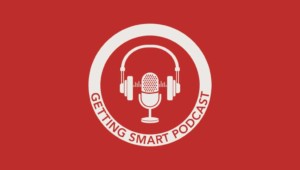What We are Doing to Ensure High Quality PBL for All

This blog originally published on Education Week, September 23, 2016
By Bob Lenz
Project Based Learning (PBL) is increasingly recognized as a powerful instructional approach in the United States and throughout the world. More and more practitioners are using PBL, and this growing demand has created a tremendous need to equip teachers and leaders with the knowledge, skills, and understanding to implement PBL effectively to achieve student outcomes. Currently, there is no clearly defined and agreed upon description of what high quality Project Based Learning looks like in practice. This has resulted in a high degree of variability in how teachers and school leaders understand and enact PBL in classrooms and schools. Far too often, “hands-on” learning and “fun” activities are mistaken as PBL, falling way short of the promise of the kind of deep and engaging academic learning that results in improved student achievement. This erodes the growing confidence in PBL as an effective instructional approach and undermines the spread of PBL as a mainstream practice.
Beginning this fall, the Buck Institute for Education (BIE) will be leading an initiative to design, develop, and disseminate a set of nationally and internationally recognized guidelines for the practice of high quality PBL, in collaboration with national and international leaders and experts in PBL. Sponsored by the Project Management Institute Educational Foundation, BIE, along with other education leaders will develop and disseminate a set of nationally and internationally recognized guidelines for high quality PBL.
This project, called High Quality PBL: Guidelines for Practice, will identify the essential components of Project Based Learning and provide quality and consistency across classrooms, schools, districts and states. The purpose of the guidelines is to increase widespread and consistent use of high quality PBL and cultivate project management skills. The guidelines will be used by:
- students, teachers, and leaders in public, private, and charter schools to improve teaching, learning, and assessment;
- instructional coaches and professional developers to build the capacity of teachers and leaders;
- pre-professional and teacher education programs to certify principals and teachers; and
- technology companies to guide the development of PBL tools and resources.
The goal of the effort to promote high quality PBL in classrooms is to increase the number of students mastering core academic content and deeper learning competencies: collaboration, communication, critical thinking, and self-directed learning with an academic mindset. In addition, the Guidelines will not only promote the importance of learning through projects, but also the value of learning how to effectively manage them, a critical 21st century skill.
Join
We are putting together a large group of thought leaders, educators, policymakers, business leaders, philanthropists, and other stakeholders (including parents and students) to contribute to the conversation around high quality PBL. To join in the movement, follow along at #PBL and look for additional content on the BIE blog and Getting Smart’s blog. Beginning in early 2017, there will be opportunities for you to provide feedback on the draft of the guidelines and to share your voice and stories around high quality PBL.
Call to Action
We want to draw on educator’s PBL wisdom and experience and learn. This fall, we are soliciting ideas that can promote high quality PBL.
- What’s working well with PBL currently? (in your context and from your perspective)
- What could be better? Put another way, what gets in the way of high quality PBL?
Please comment in the fields below with short answers to these questions and we may quote you in an upcoming blog on this work.
For more, see:
- Project-Based Learning is Here to Stay. Here’s How to Make it High Quality
- Project Based Learning with an Equity Lens
- Preparing Students for a Project-Based World
This blog is part of the High Quality PBL project. This project is supported by Project Management Institute Educational Foundation (PMIEF) and the William and Flora Hewlett Foundation. For more, see www.BIE.org and follow @BIEpbl for all the latest news and resources on high quality project based learning and use hashtag #PBL.
Bob Lenz is executive director of the Buck Institute for Education. Follow him on Twitter @PBLBob.
Stay in-the-know with all things EdTech and innovations in learning by signing up to receive the weekly Smart Update. This post includes mentions of a Getting Smart partner. For a full list of partners, affiliate organizations and all other disclosures please see our Partner page.






Amanda Curtis
I think it is great that there will be guidelines for using PBL in classrooms but find myself wondering if this will limit what teachers can do with the technique. Do you feel this will serve against using a PBL approach?